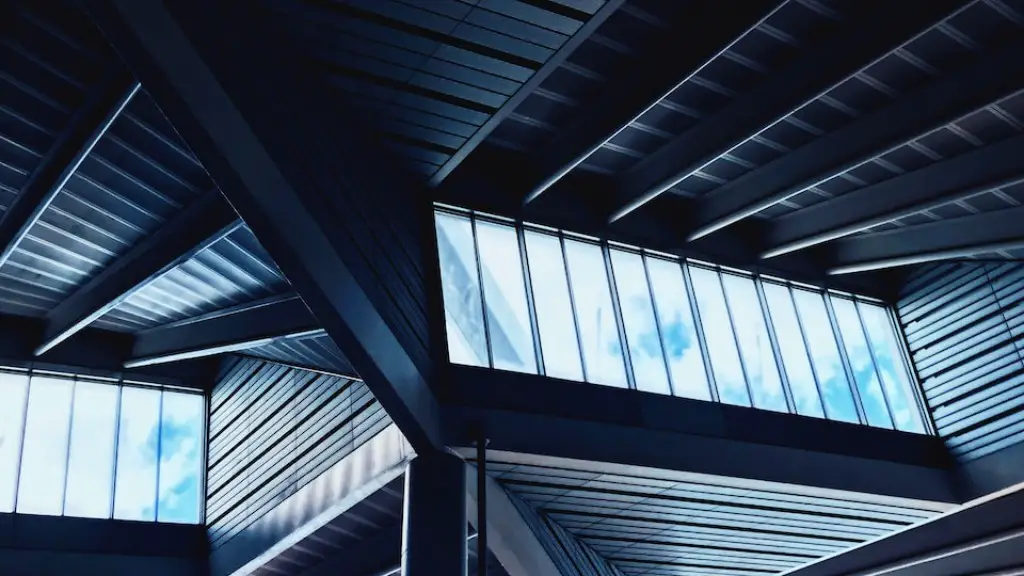Architecture has long been seen as a stable, lucrative career. But for many young people who enter the profession, this isn’t always the case – with many facing challenges and difficulties that make architecture a difficult career choice. Here we explore why architecture is a bad career, from reasons such as lack of financial support, to long hours and low job security.
When it comes to studying architecture, there is a lot of expense associated. Tuition fees and costs related to getting the right skills can be high and beyond the means of many people. Similarly, even once employed, the pay may not be enough to make ends meet. This lack of financial security can put a strain on those who plan to make architecture a career.
The long hours expected of architects are another source of difficulty. Long hours of hard work are commonplace in the industry, and this is often coupled with a lack of sleep and a feeling of being overwhelmed. This can be compounded by the stress of projects running over time and client deadlines being pushed further out.
Finally, there can be a lack of job security in the architecture industry. Competition for jobs and contracts is high, and people may not always get the opportunities they need to build their experience and reputation. The corporate world is also fickle and can quickly abandon a project if costs rise or deadlines are missed, resulting in even more insecurity.
Disadvantages of Career In Architecture
The career in architecture involves many risks and disadvantages. First, the field is incredibly competitive, meaning that those interested in the profession must have top-level expertise and the ability to express ideas clearly through visual representation. There is a lot of precision and technical knowledge involved in creating a successful drawings and designs. It’s essential for aspirants to be knowledgeable about zoning laws, mathematics, and other related areas. Not only is the job hazardous, but it also requires a plethora of technical knowledge.
The landscape of architecture is constantly changing. Technology is advancing rapidly and new materials are being introduced each day. This means that professionals must be knowledgeable in the latest trends and tools while also respecting the aesthetic value of past designs. Finding this balance is difficult and those interested in becoming architects must stay up to date with the newest developments.
With the changing trends, the job of an architect can also be a lonely one. There are many times when they are expected to work in solitude and make decisions with limited insight from other professionals. While collaborations and team meetings are necessary, architects will spend most of their time working on individual projects, which can be challenging if they’re used to working in groups.
Economic Challenges in Architecture Field
The economy is a factor to consider for anyone’s career choice – and for architects, it can be even more of a challenge. Architects must often bid for projects and understand the financial aspect of working with clients, yet these are areas that are often difficult to break into. This can lead to fluctuations in pay, meaning that a stable income isn’t always guaranteed.
Equally, architects must be adept at networking and reaching out to potential employers, which can be a time consuming and sometimes thankless task. Finding work and building contacts in the industry can be a slow process, taking away energy needed to focus on designing and creating inspiring pieces of architecture.
Some architects may also find it difficult to convey the value of their work to clients. As the financial and technical detail of a project can be complicated, the client may not see the point of investing in such detail. This can be a challenge, as often the value of design only becomes apparent when construction is complete.
Technical Aspects in Career In Architecture
The career in architecture also involves extensive study of physics and engineering. Although much of the work is creative and abstract, there is also a technical side that requires a thorough understanding of basic sciences and even mathematics. Having a knowledge base in technical areas such as quantitative analysis and the application of scientific principles to designing can be the difference between a successful project and a complete failure.
Moreover, aspiring architects must also ensure that the material and structural integrity of the design and the building’s elements are in line with local, state and national codes and regulations. Working with a variety of local government offices and other professionals for inspections and approvals is essential for any projects to be completed on time and as per the expectations.
Not only is there a degree of technical expertise required, but architects often need to blend this with creative vision and ideas. As a result, they will often be expected to take a step back and observe details in their projects, to ensure that their ideas can be achieved in the consensus of the wider team.
Unstable Nature Of Architecture Career
The architecture industry is a tough industry to crack, and it can be difficult to gain a foothold. With external competition continuously increasing, and the larger firms claiming most of the industry’s projects, it can be hard to make a name for yourself. It’s often the case that freelancers and small firms have the hardest time competing with their more established counterparts.
Moreover, for those considering a career in architecture, the unstable nature of the job should be taken into account. With the unpredictable nature of the industry, there’s no saying how successful a person’s career in architecture will be. As such, many don’t feel comfortable investing a considerable amount of time and money into an industry that could never bear fruit.
Finally, architecture is a stressful job and can take its toll on mental wellbeing. Architects must be able to manage huge projects, strict deadlines and severe criticism, all while keeping their composure. The stress of the job can be draining and, without proper support, can become overwhelming.
Social Aspects Of Career In Architecture
A career in architecture involves collaboration and communication with those outside the profession. Architects must be able to explain their ideas, dreams and designs to their clients and bring their vision to life. Working with clients from different backgrounds, finding common ground and dealing with their specific preferences and tastes can be hard.
Furthermore, when it comes to preparing and pitching projects, architects must stay up to date on the latest trends and technological advances in the field. Being aware of technological advancements and the ways in which they can be incorporated into a design can give architects an edge and make them stand out. Additionally, it allows them to provide clients with creative solutions to problems that conventional architecture might not resolve.
Finally, architects must also stay up to date on current trends and fashion to keep their designs modern and relevant. Clients often look for up-to-date designs, so architects must stay on top of these changes. Being aware of trends and fashion allows them to keep their designs unique and fresh and make sure their skills remain in demand.
Pressures Of Architecture Field
As with any profession, a career in architecture can be stressful, and the pressures of the job can be immense. Projects have tight deadlines and budgets, meaning a lot of pressure to deliver on time and within the allocated budget. Additionally, architects often need to do multiple presentations for the same project, which can be draining on the creative process and put stress on the team.
Moreover, the scale of architecture can create additional pressures. Projects often involve irregular shapes and multiple materials; finding combinations of these materials and working with different tools and methods to achieve the desired aesthetic is a difficult challenge.
Additionally, the ever-changing landscape of technology and the application of new materials can disrupt tried-and-tested methods of building. This means that the architect must stay on their toes, be constantly learning and adjust to the changing dynamics of the industry.
Finally, architects may find themselves in uncomfortable positions on a regular basis. They may have to compromise on aesthetic designs in order to meet budgets, or, conversely, adjust the structure and material choice to ensure safety and stability. Making these decisions, again and again, can be a difficult task, leading to further stress.





